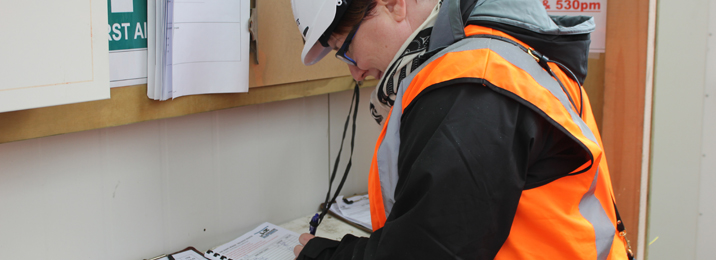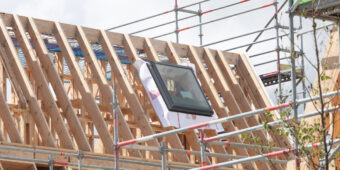Are you prepared?
10 Jan 2017, Featured, Prove Your Know How, Safety

Recent events have served to remind us that natural disasters can strike at any time and no doubt they will have been a topic of conversation at your work place. It’s important that you’re ready for anything – be it an earthquake, fire or accident – so we’ve put together some tips to help you with your emergency response planning
People’s safety should be the first priority in any emergency. Make sure you have a system in place for getting in touch with all your staff and ensure their emergency contact details are up to date.
It’s also important that you keep track of how many of your team are on site and need to be accounted for. If evacuation is required, take the register to the evacuation point so you can sign everyone off. Also, check the sign-in register to make sure visitors are safe.
Preparation is key
The most important thing when it comes to dealing with emergencies is being prepared. The best way to ensure you and your staff are ready is to have a concise, well-tested emergency response plan.
Your emergency plan should include the following:
- Locations of alternative exits.
- Keep an up-to-date register of your emergency equipment (such as extinguishers, fire blankets); include when they were last tested and where they are located.
- Make sure your staff know where the evacuation point is and ensure it’s in a safe place, away from obvious fire, earthquake or flooding hazards.
- Make sure everyone is aware of what the emergency procedures are, and remind them at Toolbox Talks or prestart meetings.
- Know where your nearest Civil Defence assembly point is.
- Keep a list of what’s in your Civil Defence kit.
- Where possible, make sure everyone has personal emergency supplies, which should include water, food, a First Aid kit and other emergency supplies.
- Keep a list of people who have specific skills and responsibilities in an emergency and their contact details.
- Keep a list of fire wardens and the date they were trained.
- Keep a record of emergency plan tests and trial it regularly to ensure it’s effective.
- Keep a list of emergency contacts, including useful services such as the doctor/medical centre, hospital, poison centre, local council, pollution hotline, neighbours, insurer, plumber and electrician.
- In case of chemical/environmental emergency, store appropriate personal protective equipment (PPE) on site. Make sure everyone is trained in the safe control of any chemicals you have on site and up to date with emergency procedures associated with their use.
When disaster strikes:
- Turn on your radio for advice and information.
- Know the Civil Defence warning signal.
- Know your nearest Civil Defence post and Police station.
- Makes sure you have provisions available in case you are stuck at work for several days.
- Report to your manager any events that harm people or damage property.
If an earthquake strikes while you’re at work, remember:
- Keep calm.
- Drop, cover and hold.
- Do not run outside and stay indoors where practical.
- Keep away from windows and heavy furniture.
- If necessary, evacuate using a previously identified route. Take bags, phones, wallets and emergency supplies.
After the quake, make sure to:
- Gather staff together and establish everybody’s condition. After stairs are checked, try to gather workers in one place.
- If the building is damaged, turn off water, electricity and gas at mains if safe to do so – conserve your water.
- Treat any injuries.
- Get in touch with your neighbours – they may need help.
- If help is needed, go to your nearest Civil Defence post.
Be extra careful when re-entering buildings after an earthquake:
- If you’re a business owner, listen to Civil Defence advice and, when safe, carefully inspect your building’s exterior.
- If you’re a worker, wait until your boss tells you it’s safe to go back to work.
- If you see cracks, or have the slightest doubt about the safety of the building, get an expert report before going inside.
- Once you are cleared to enter the building, be extra vigilant as the contents of the building may have shifted, material may have fallen and there could be unexpected hazards.
- If you know there are chemicals or other dangerous materials, make sure to wear PPE and be very careful when going inside.
If a tsunami happens while you’re at work and your business could be affected, remember to:
- Go to high ground immediately – know in advance your route to a safe location.
- Go at least 1km inland or 35m above sea level. Make sure to leave room for the people behind arriving behind you.
- Don’t be tempted to go ‘sightseeing’.
- Listen to the radio for information and follow Civil Defence instructions.
In case of a hazardous substance spill:
- Raise the alarm.
- Evacuate if necessary.
- Identify the substance if safe to do so.
- Put on PPE.
- If safe to do so, close off the source of the spill (eg, secure tops or lids).
- Remove sources of ignition if flammable substances are present.
- Identify the danger posed by the spill, but only respond if safe to do so.
- Refer to the safety data sheet or call an approved handler or other specialist for advice.
- If necessary, call emergency services and advise the local council.
- Use your spill kit if appropriate and safe to do so.
- Prevent the chemical from entering drains or leaving the site.
- Dispose of waste safely, as set out in the safety data sheet.
In case of a fire:
- Raise the alarm.
- Evacuate.
- If safe to do so, activate any emergency shutdown systems.
- Call 111 and your manager.
- If it’s a small fire and it’s safe to do so, use your fire extinguisher; if it’s a large fire, don’t try to extinguish it – retreat to a safe distance and call 111.
- Don’t use water on petroleum or electrical fires.
- Do not endanger yourself.
- Make sure you have an escape route.
To talk to a health and safety advisor about emergency planning, or for a free emergency response plan template, head to www.sitesafe.org.nz. The Civil Defence website, getthru.govt.nz, also has useful information.
Site Safe is a not-for-profit, membership-based organisation that promotes, inspires and supports a culture of health and safety in New Zealand construction.
Register to earn LBP Points Sign in
2 Comments
Leave a Reply
You must be logged in to post a comment.




Good quiz
safety